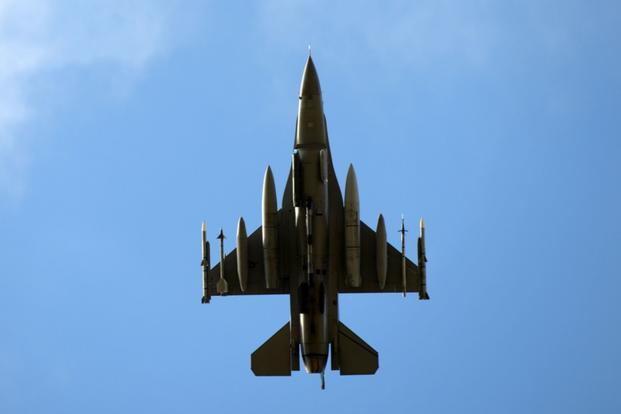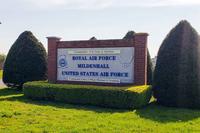A late directive from an air traffic controller and poor visibility contributed to the deadly crash last year of an Air Force F-16 fighter jet and a private Cessna plane, according to a new report.
An F-16 Fighting Falcon of the 20th Fighter Wing at Shaw Air Force Base, South Carolina, collided with a Cessna 150M on July 7, 2015, over Moncks Corner, South Carolina. The Cessna's pilot, Joseph Johnson, 30, and his passenger and father, Michael, 68, died of blunt force trauma in the accident.
Maj. Aaron Johnson, pilot of the F-16CM, didn't have enough time to turn to avoid colliding with the Cessna, which flew into its path, according to an Air Combat Command Accident Investigation Board report released Friday.
"Based on radar information and a data-based animation, the F-16 pilot had an obstructed view and insufficient time to avoid the collision," ACC said in a release. "At the time, the Cessna pilot was ascending into the path of the F-16."
The F-16, en route to Charleston Air Force Base from Myrtle Beach International Airport, was traveling at 282 mph; the Cessna at 78 mph. As the F-16 descended and turned south, the Cessna ascended and turned to meet the aircraft, according to a separate report from the National Transportation Safety Board.
While air traffic control advised the "F-16 pilot that the Cessna was approaching," and "directed the F-16 pilot to a 180-degree left turn," the command came too late, according to ACC.
The controller told the pilot, "Death Four One [F-16], if you don't have that traffic in sight, turn left heading 1-8-0 immediately," according to the NTSB report.
Seconds after 11 a.m., the aircraft collided at 1,466 feet above the ground, crashing about 25 miles north of Charleston.
Johnson flew for roughly 10 miles before ejecting. He sustained minor injuries. Both aircraft were destroyed in the collision.
The "best action would have been to instruct F-16 to turn before airplanes were close and away from Cessna's path," according to the lead NTSB investigator's findings and safety presentation.
The NTSB investigator specifically cited "the approach controller's failure to provide an appropriate resolution to the conflict between the F-16 and the Cessna."
Also playing a role in the accident were "the inherent limitations of the see-and-avoid concept, resulting in both pilots' inability to take evasive action in time to avert the collision," according to the NTSB.
The command listed as contributing factors "the controller's directive for the military aircraft to operate near an uncontrolled airfield, the timing of the controller directives, and the pilots' non-use of additional systems or safeguards which may have aided situational awareness.
"While all concerned acted with the best intentions, the situation left little margin for error," Maj. Gen. Scott Kindsvater, the ACC board's president, said in the release. "It's a terrible tragedy and loss to the families."
-- Oriana Pawlyk can be reached at oriana.pawlyk@military.com. Follow her on Twitter at @Oriana0214.

























